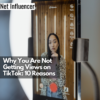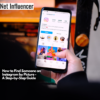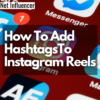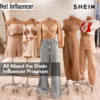Platform
Fostering College Communities: How Connyct Creates Purpose-Built Social Networks

As major social platforms face increasing scrutiny over privacy and algorithmic content distribution, Matthew Berman’s new platform Connyct identifies an underserved market: providing college students with a private, community-focused social network that connects online interactions with campus life.
Origins and Development
Matthew co-founded a video platform in college in the 2000s with an early YouTube competitor, Martin Sorrell & WPP, before the complex algorithms and AI. This initial venture taught Matthew about building genuine online communities before he even knew what “creator economy” or “influencer” meant.
The idea for Connyct was conceived in March 2023 when Matthew teamed up with David Polinsky, building on previous success in social media. The platform emerged from discussions between the two about shifts in social media usage.
“Covid hit, mobile short-form video completely took off and changed the game,” Matthew explains. “We started talking about what this thing could be. This vertical video allows you to connect and communicate with people over things you love… the time is right, and the time is here.”
Focusing on Campus Life
The choice to target college students stems from recognizing their unique needs. “It’s a transformative period in someone’s life,” Matthew notes. “For many, it is their first time alone and trying to find things you love. You’re trying to meet people, and your whole life before that oftentimes was dictated by geography and neighborhood in which you were born.”
Matthew’s college experiences influenced this direction. “Facebook was cool back then,” he reflects. “You could share pictures of stuff you didn’t want your mom or boss seeing. It was a little more kind of private and granular.”
Extensive user research validated this approach. “I spoke to thousands of students over this last year,” Matthew reveals. “And they repeated time and time, ‘I need to know what my friends are up to. It’s all group chat, chaotic, and messy.’”
Connyct stands out through its emphasis on facilitating real-world meetups. “We built some awesome content creation tools like a whole video editor with licensed music in it,” Matthew explains. “We wanted to provide people with tools to create cool content.”
The platform prioritizes privacy for its student users. “At its heart, those platforms are one to many, instead of one to different groups of people, to different communities of people,” Matthew says. “I will never do what Facebook did to me. The day I logged in, my mom commented on everything. That would never happen [on Connyct].”
Core Features
Security and Privacy Protection
Connyct implements comprehensive privacy measures starting with .edu verification. The platform is entirely U.S.-based and hosted. “I can’t see chats,” Matthew notes. “I have no way of even knowing what’s happening.”
This addresses common concerns on other platforms. “Many young women I’ve spoken to told me they get creeps in their DMs from every single post that they make,” Matthew shares. “So, we’ve built all this privacy protection into our platform right now and will continue to focus on providing the best experience we can.”
Campus Events Integration
The platform introduces new ways to coordinate campus activities. “If I’m a huge Beyoncé fan, I want to find out where the Beyoncé fans in my school or town are and where they meet in real life,” Matthew says. “Where are we having a tailgate? Where are we doing this?”
Users can create multimedia content around events. “You can create content around the event and make this as big and small as you want,” Matthew notes.
Licensed Music Features
A partnership with Warner Music Group enhances content creation. “Warner has been an incredible partner, and I think they see the vision of what we’re trying to make,” Matthew shares. “They want their music and artists to be introduced to as many people as possible.”
This integration meets user expectations, with Matthew arguing that a successful creative social platform must have real music and not “stock music.”
Meeting Development Challenges
Building a new social platform comes with many hurdles. “Every day brings challenges, and I think it’s our job to try to navigate them,” Matthew acknowledges.
Talent acquisition proved difficult initially. “‘We’ve made a social network to take on TikTok’ was a crazy pitch, and we were aware of it,” Matthew admits. “Nevertheless, it’s easier now that we’ve made it. People take us a lot more seriously.”
The team prioritized experienced professionals: “We looked to work with people with experience, who have strong convictions, know what they want to make, and get things done,” Matthew explains. “As the saying goes, ‘If you want to go fast, go alone; if you want to go far, go together.’”
User growth requires strategic planning. “We have a new social media product that has to get out there and build up the audience and users to get the most benefit for most people,” Matthew notes.
Their solution focuses on specific markets: “We’re not trying to roll this out and focus super broadly at first. We’re trying to focus on specific areas and markets and see what people like and what we can continue improving. I would rather have 90% of people at one or two schools using this than 1% of people at 50 schools. I want people who will fall in love, enjoy it, and help work with us to make this thing as cool as possible.”
Supporting Content Creators
Connyct develops sustainable earning opportunities for creators. “As a newer social media platform, we didn’t have a $100B war chest like Google, but we’ve done a tremendous job compared to the others, figuring out how to monetize and get people paid,” Matthew points out.
The platform gives creators control over their communities. “We want to work with creators where they own and manage this section of our world,” Matthew states. “However, it’s not just run by us. I think they should run it.”
Platform stability matters for creator success. “I look at the disruption with TikTok right now as a wake-up call to some folks,” Matthew observes. “This institution could change ownership or disappear.” He references past platform changes: “I remember recommending this to a big brand back when everything was about Facebook… I said, ‘Guys, you have a million fans here. Don’t put so many eggs in this one basket. Facebook can fade away any day.’”
Creator support remains central to development. “That’s something that we want to work on with the creator community and everyone on our team,” Matthew says. “If anyone wants to talk with me, we can figure this out 100%. I think it’s important that creators get paid and have a viable plan.”
This approach addresses common frustrations with existing platforms. “We heard repeatedly from some huge creators that they couldn’t even get a phone call answered when they had major questions and issues needing fixing.”
Future Development
Current development prioritizes iOS users. “We have Android versions of the app, but I made the call [to focus on iOS] right now given that the numbers of iOS penetration for the U.S. college market are around 88%,” Matthew shares. “I thought it was a pretty obvious answer. We’re already doing a lot within the platform itself.”
The platform could expand beyond college communities. “You go to college for four/five years. Let’s say you graduated from Baton Rouge, Louisiana; you move to Houston,” Matthew explains. “You’re going to have different challenges when you move there, which mirrors in some way when you went to college for the first time.”
Vision for Social Connection
Matthew prioritizes human relationships over AI trends. “There’s a lot of talk and showing around AI influencers and avatars. No. That’s garbage,” he states firmly. “I watch Marques Brownlee because I love his content. I don’t care if he’s reviewing a quarter he found on the road. I’ll just watch him because he’s the man.”
Social media usage patterns indicate a demand for closer communities. “Over the last two years or so, I have joined so many private communities and different Discord channels and shifted a lot of attention and focus from big to small,” he reflects.
“I just want people to use our platform to create as much awesome stuff as possible,” Matthew shares. “Maybe I ran out of things on YouTube to watch. Now, that’s not possible. I want to see interesting content from people who may have missed the boat on TikTok or YouTube. Hopefully, we can give some already talented folks a new experience or opportunity.”

















